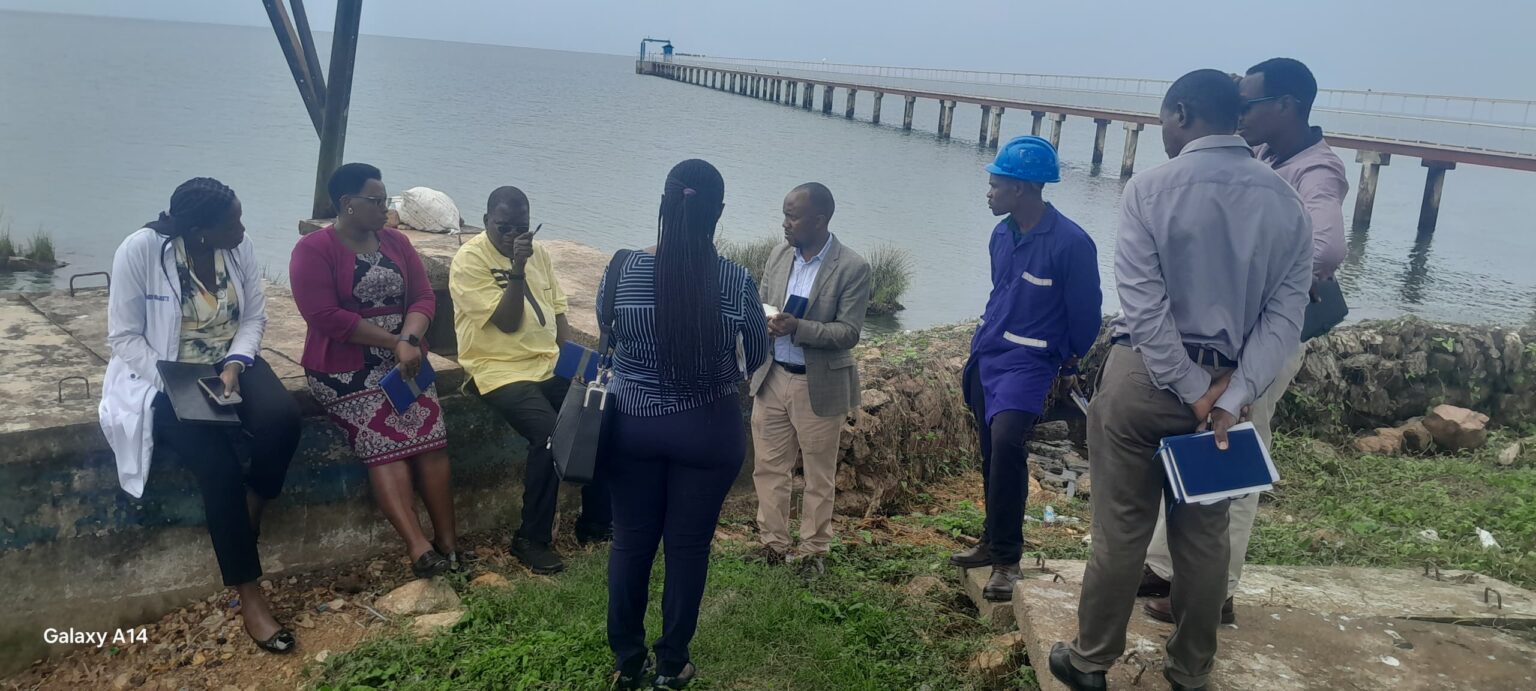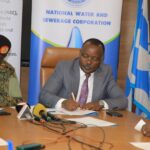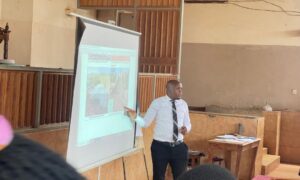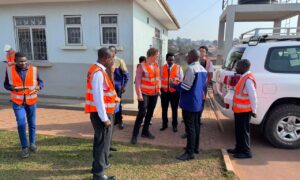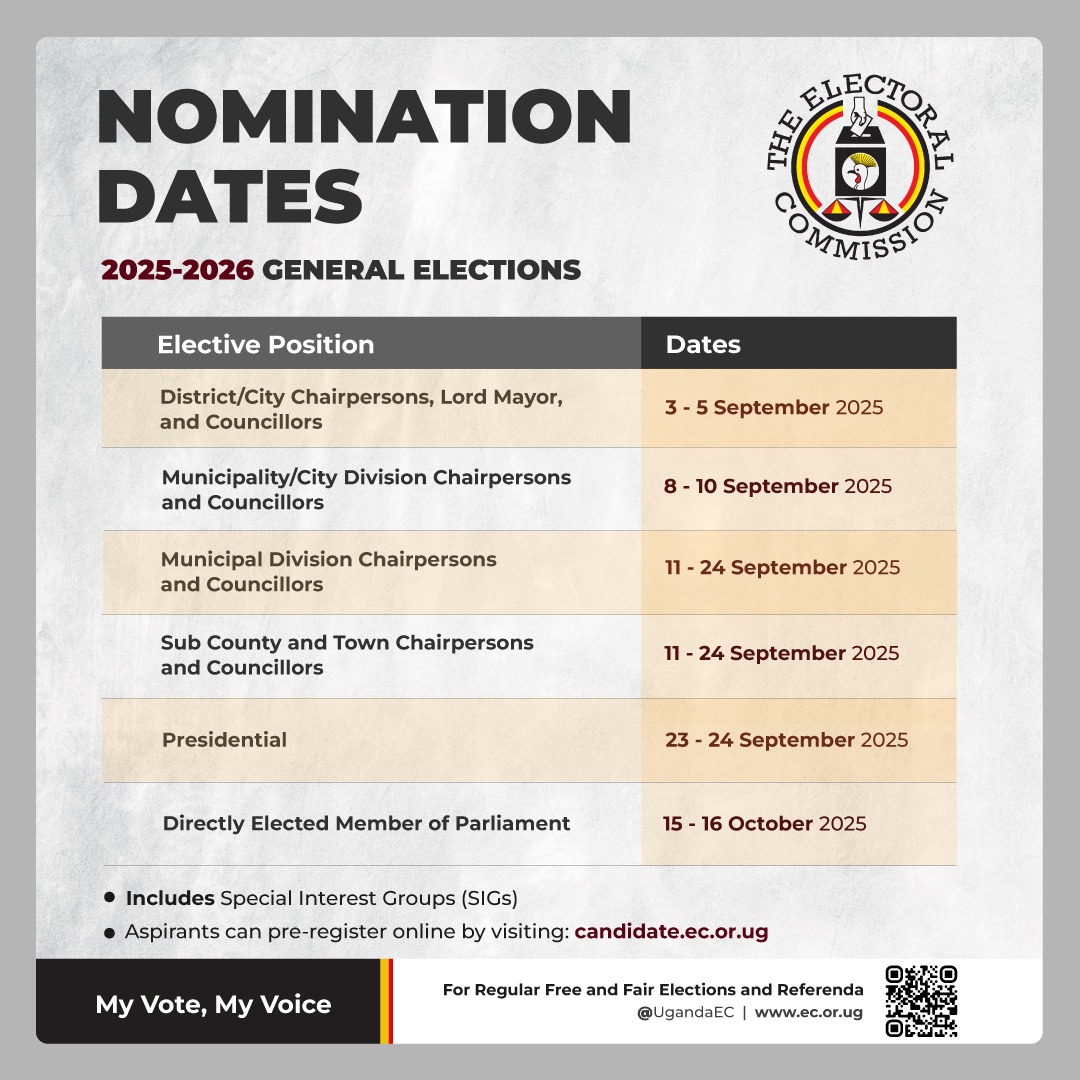ENTEBBE: Efforts to ensure consistent water quality and sustainable supply across Entebbe took a step forward on Wednesday, July 16th, 2025 as senior technical teams from the National Water and Sewerage Corporation (NWSC) held in-depth discussions on the performance and capacity of the area’s current infrastructure.
The engagements, convened by the NWSC’s Deputy Managing Director – Technical Services, Eng. Johnson Amayo, alongside Director Project and Capital Development (P&CD) Eng. Taremwa Denis, and Manager P&CD Eng. Charles Kayondo, focused on practical solutions to long-standing production and distribution challenges in Entebbe’s dual-plant water system.
The deliberations held at the Entebbe Water Treatment Plant, looked at the pressing need to balance increasing water demand with the corporation’s commitment to delivering water that meets national and international quality standards. The team zeroed in on three major issues including the overloading of the Old Plant’s pressure filters, compromised raw water abstraction due to damage at the offshore intake, and inadequate retention time in the New Plant’s sedimentation tanks, each affecting the plant’s ability to consistently produce safe, clean water.
Despite its original design capacity of 4,400 m³/day, the Old Plant has been pushed to deliver up to 7,000 m³/day in an effort to meet rising demand. However, this workaround, paired with the compromised intake line now drawing from less protected lakeshore zones, has exposed the system to increased water quality risks. At the same time, the New Plant’s sedimentation units are struggling to perform optimally at the current flow rates, raising the urgency for intervention.
With guidance from the DMD-TS, an actionable roadmap was agreed upon. Immediate steps include the ongoing refurbishment of the Old Plant’s filters—currently 60% complete—and the successful creation of a dead volume in the low-level reservoir to prevent sediment backflow into the distribution network.
In the medium term, attention will turn to upgrading both the raw water pumping capacity and sedimentation infrastructure at the New Plant, while reconfiguring the Old Plant to serve as a support unit for pre-treatment and blending. Ultimately, a long-term plan to construct a brand-new treatment facility—capable of injecting an additional 30,000 m³/day into the network—is on the table to future-proof supply in the greater Entebbe area.
The team also toured the State House – Nsamizi High-Level Reservoir to assess operational inefficiencies. General Manager Gloria Bashemera presented evidence of reservoir overflows occurring even during peak demand, particularly while downstream communities such as Kawuku and Kajjansi face intermittent dry zones. While progress has been made under Phase 1 of the High-Level evacuation strategy, the GM emphasized the urgency of advancing to Phase 2 to resolve the mismatch between supply and distribution reach.
Eng. Amayo agreed with the proposed direction, reiterating that all efforts must ultimately align with the long-term goal: a robust, modern water treatment plant that can sustain Entebbe’s future.
The discussions reflect NWSC’s ongoing commitment to technical excellence and long-range planning as the foundation for delivering equitable water access. Beyond troubleshooting, they underscore the corporation’s resolve to keep moving the needle on service delivery—adapting to growth, anticipating future demand, and building systems that serve both current and future generations


